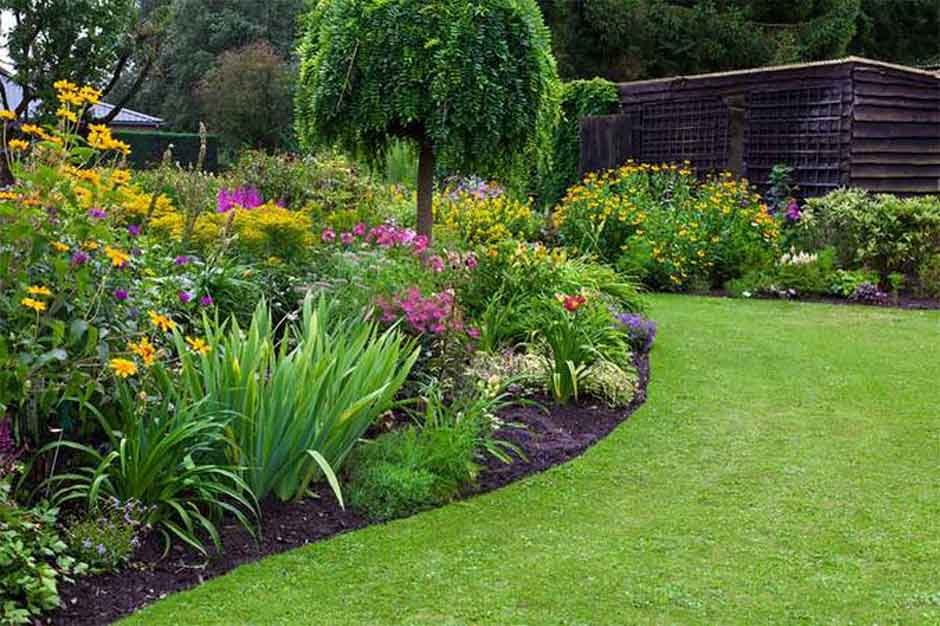In an era when environmental consciousness is at an all-time high, sustainable landscaping has emerged as a vital practice for homeowners, gardeners, and environmental enthusiasts alike. Sustainable landscaping integrates ecological principles into garden and yard design, ensuring that outdoor spaces are not just beautiful but also beneficial to the environment.
In this comprehensive guide, we’ll explore the significance of eco-friendly gardening practices and provide actionable ideas to transform your garden into a sustainable haven.
Importance of Eco-Friendly Practices in Gardening
Sustainable landscaping is more than just a trend—it’s a commitment to preserving our planet. Here are a few reasons why adopting eco-friendly practices in your garden is essential:
- Resource Conservation: Reducing water and energy usage minimizes your garden’s environmental footprint.
- Biodiversity Enhancement: Native plants and eco-conscious designs support local wildlife and promote biodiversity.
- Soil and Water Health: Avoiding harmful chemicals keeps soil and water sources clean and safe.
- Climate Change Mitigation: Sustainable landscaping techniques can help absorb CO2 and improve air quality.
Eco-Friendly Landscaping Ideas for Small and Large Gardens
Whether you have a cozy urban garden or a sprawling estate, there are numerous ways to make your landscaping more sustainable. Here are some practical ideas to get you started:
Water Conservation Techniques
Water is a precious resource, and conserving it should be a priority for any eco-friendly gardener. Here are some effective methods:
- Drip Irrigation: This system delivers water directly to the plant roots, reducing waste and promoting healthy growth.
- Rainwater Harvesting: Install rain barrels to collect and reuse rainwater for irrigation.
- Drought-Tolerant Plants: Choose plants that require minimal watering, especially during dry seasons.
Plant Selection for Biodiversity
Selecting the right plants can significantly impact your garden’s sustainability. Consider these tips:
- Native Plants: Opt for species native to your region, as they are adapted to local conditions and support local ecosystems.
- Pollinator-Friendly Plants: Include flowers and shrubs that attract bees, butterflies, and birds.
- Perennials Over Annuals: Perennials come back year after year, reducing the need for replanting and conserving resources.
Sustainable Hardscaping Options
Hardscaping elements like patios, walkways, and retaining walls are integral to landscape design. Make them eco-friendly with these options:
- Permeable Pavers: These allow water to seep through, reducing runoff and promoting groundwater recharge.
- Recycled Materials: Use reclaimed wood, recycled concrete, or other sustainable materials for construction.
- Natural Stone: Opt for locally sourced stone to minimize the carbon footprint associated with transportation.
Composting and Soil Health
Healthy soil is the foundation of a thriving garden. Implement these practices to enhance soil health:
- Composting: Turn kitchen scraps and yard waste into nutrient-rich compost to feed your plants.
- Mulching: Apply organic mulch to retain soil moisture, suppress weeds, and regulate temperature.
- Soil Testing: Regularly test your soil to understand its composition and amend it with natural fertilizers as needed.
Practical Tips for Implementing Sustainable Landscaping
Ready to make your garden more sustainable? Here are some practical tips to guide you:
- Start Small: Begin with manageable projects like composting or planting a few native species.
- Plan Ahead: Design your landscape with sustainability in mind, considering factors like sun exposure, soil type, and water availability.
- Educate Yourself: Take advantage of resources like books, online courses, and local workshops to learn more about sustainable practices.
- Collaborate: Partner with local gardening groups, neighbors, or community organizations to share knowledge and resources.
- Monitor and Adjust: Regularly assess your garden’s performance and make adjustments as needed to ensure long-term sustainability.
The Future of Sustainable Landscaping: Trends and Innovations
As technology and environmental awareness continue to evolve, so too does the field of sustainable landscaping. Landscape design such as those in Salt Lake City has embraced these changes, leading to innovative and eco-friendly solutions. Here are some trends and innovations to watch for:
- Smart Irrigation Systems: Using sensors and weather data, these systems optimize watering schedules to conserve water.
- Edible Landscaping: Integrating food-producing plants into ornamental gardens promotes sustainability and self-sufficiency.
- Green Roofs and Walls: These living structures reduce urban heat islands, improve air quality, and provide habitat for wildlife.
Conclusion
Sustainable landscaping is a powerful way to make a positive impact on the environment while creating beautiful, functional outdoor spaces. By adopting eco-friendly practices, you can conserve resources, enhance biodiversity, and contribute to a healthier planet.






